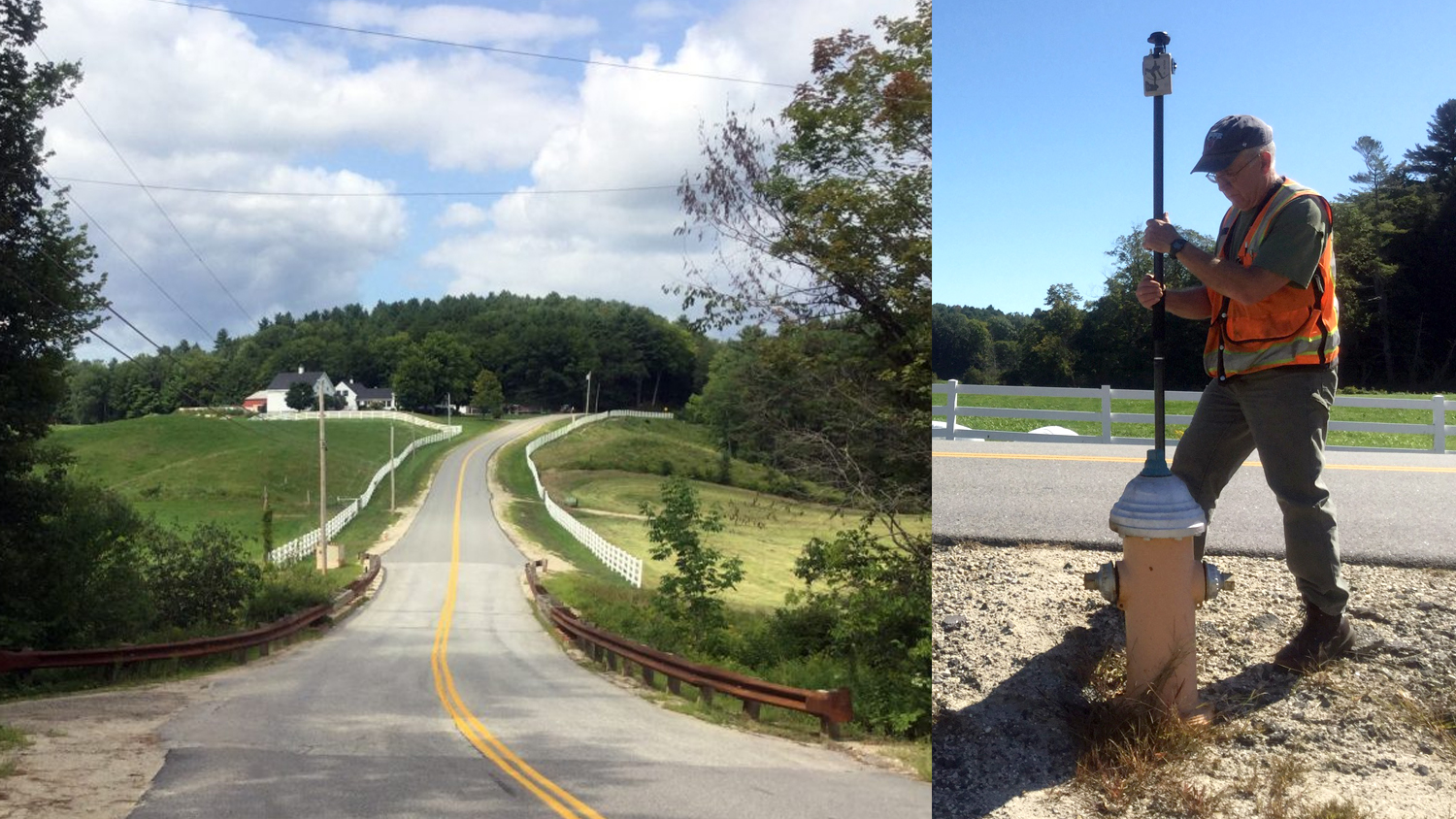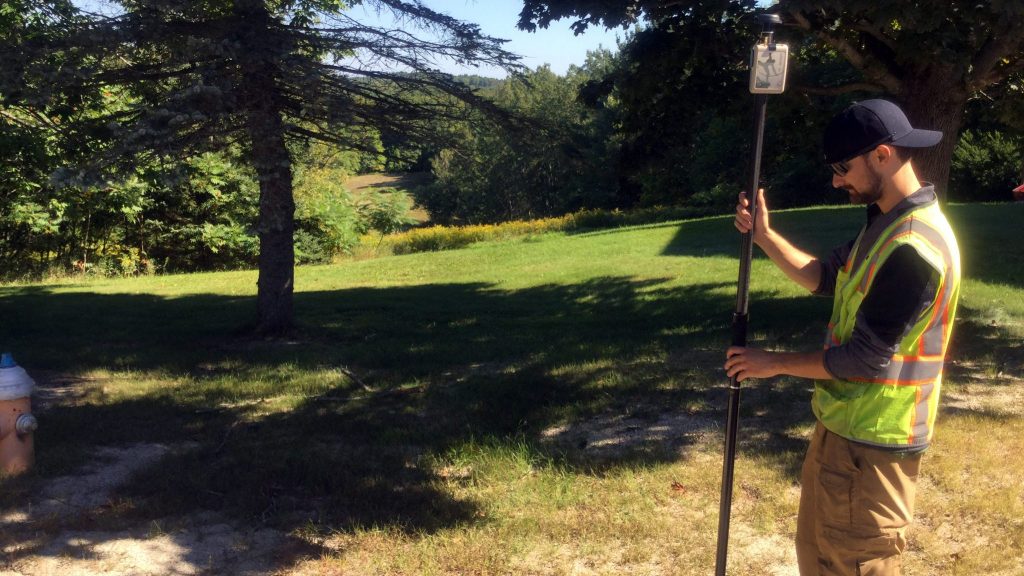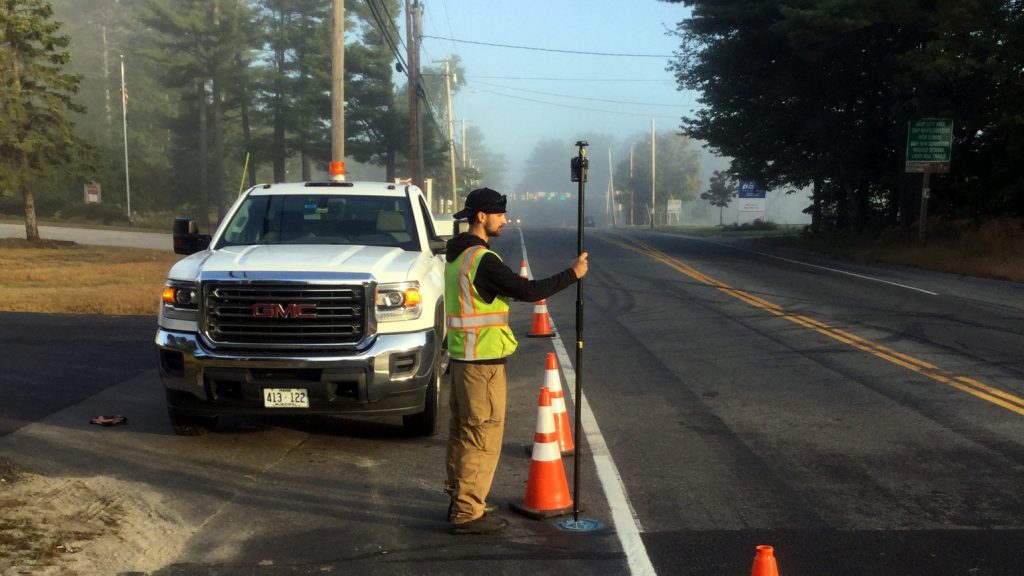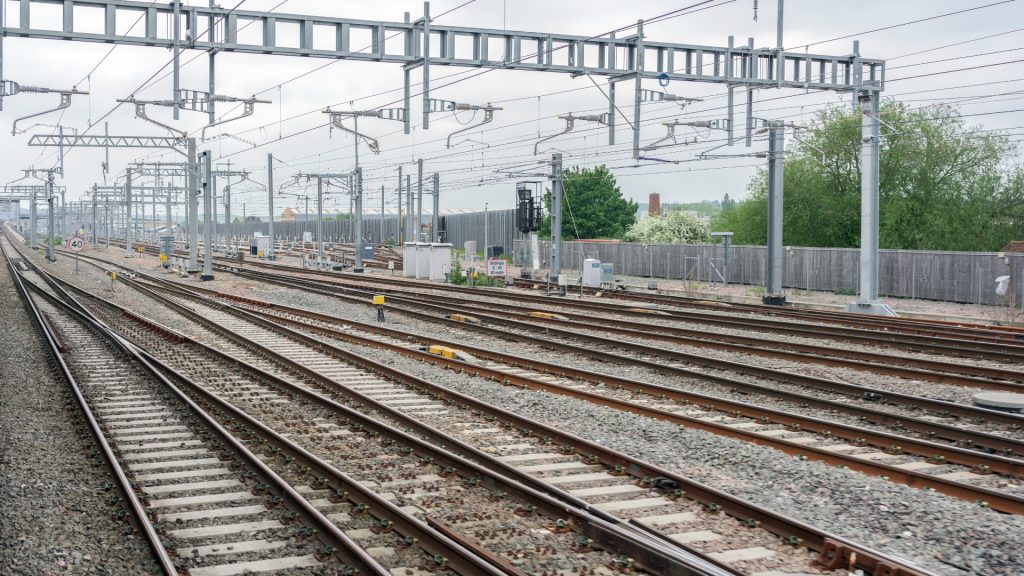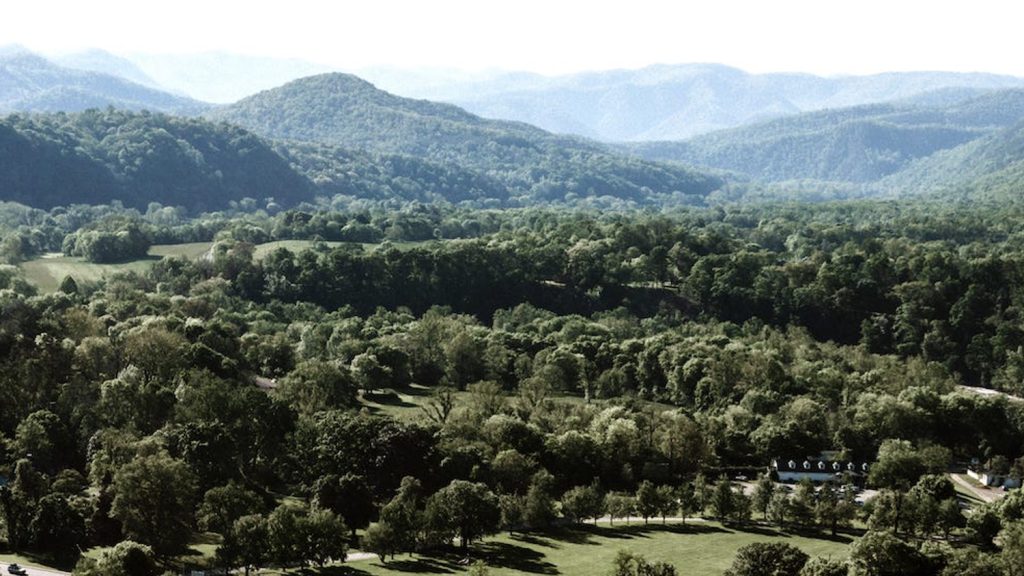In Maine, as in many states, water districts face the pending retirement of a generation of employees. The challenge is that these employees know the infrastructure better than anyone. Now, one Maine consultancy is helping small- to mid-sized districts future-proof their asset data by using Survey123, iPad®s and Arrow 100 for infrastructure mapping.
About the Consultancy: Northern Forests, LLC
Don’t let the name fool you. Northern Forests, LLC., is a GIS and GPS services provider that serves not just foresters, but also any organization that needs to map something. In Maine, that includes a lot of water districts.
“I love New England’s forests ,” Northern Forests President Al Schaeffer says. “There is something steadfast and reliable about them. I’d like to think clients think the same thing about my company.”
“And I also love maps and GIS,” he said. “In fact, I started out thinking I’d offer mapping services to foresters. But it turns out water districts and other utilities have a greater need.”
Today, Northern Forests provides mapping services to small- to mid-sized water districts, sewer districts, and other organizations, primarily in southwestern rural Maine.

“I love New England’s forests. There is something steadfast and reliable about them.”
— Al Schaeffer, President, Northern Forests LLC
About the Challenge: Preparing for a New Generation of Employees, Software, and Regulations
Big Turnover Among Retirees
By far, the most pressing need Schaeffer hears is that water districts need to prepare for the impending retirement of a generation of employees. These employees typically hold decades’ worth of water-infrastructure knowledge in their heads, or in vast collections of paper files, accumulated over years. Sometimes, this infrastructure dates back to the 1900s, and data has not been captured in a single digital database.
“The people I work with are not far from retirement,” Schaeffer says. “And their infrastructure information is often buried in notebooks, or in their heads, so they’re excited about someone putting GIS files and all the related data into a single software system.”
Schaeffer helps these districts capture and map their infrastructure with cutting-edge tools, especially GIS.
“These are science-oriented people,” Schaeffer says. “They see the significance of having a single information resource.”
Having an accurately mapped infrastructure database enables a rural water district to do all kinds of future-proofing activities. This includes the knowledge transfer from existing employees to new hires.
“There will be a big turnover in the years coming,” Schaeffer says.
The Need for GPS
Mapping infrastructure also allows the water districts to take advantage of increasingly affordable, modern software systems — such as billing, facility management, work management, and customer information systems. All of these systems benefit from being based on a single, accurate, and geospatially referenced database.
“You need that basemap with GPS locations to be able to use other software for other workflows, like facilities management,” Schaeffer says. “Suppose they have an intervention to replace pipes in a street, they benefit from knowing ‘how many feet of what size of pipe’ needs to be replaced. This is the information we go out and collect.”
Once Northern Forests collects all the asset locations, Schaeffer sits down with stakeholders to infer the location of their underground lines.
“As we build the database for the lines,” Schaeffer says, “we add the physical dimensions of the pipes themselves. We ‘connect the dots’ of the system.”
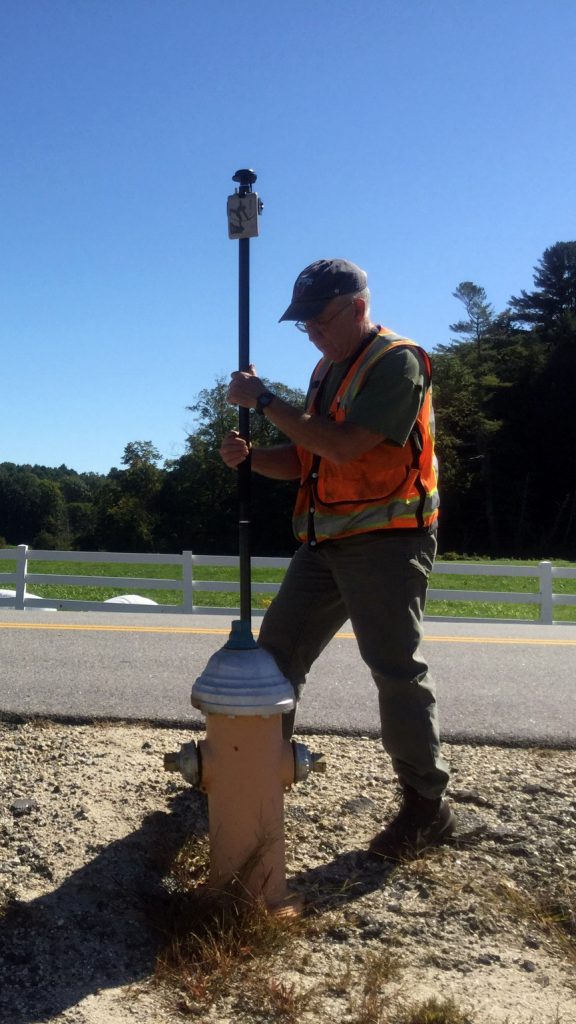
“You need that basemap with GPS locations to be able to use other software for other workflows, like facilities management.”
— Al Schaeffer, President, Northern Forests LLC
In addition to future-proofing operations, a mapped database allows water districts to better comply with government regulations. An increase in hurricane occurrences, for instance, has caused Maine, as well as other coastal states, to comply with new regulation requirements in infrastructure mapping and reporting. This ensures speedy recovery from natural disasters by reducing intervention and repair times in the field.
“It also means that if a state or federal organization comes in and says, ‘You have to replace all the pipes that date back to a specific time,’ these districts can then respond positively, having now the required resources to do this,” Schaeffer says.
The demand for Northern Forests’ services was enough to re-orient Schaeffer’s focus from forestry to water customers, as well as other utilities who could realize a more direct benefit from GIS mapping services. But to begin, he needed to find an appropriate field technology that would allow the inventory of infrastructure often laid in rural areas, managed on tight budgets, and to be operated by individuals who were not necessarily familiar with it.
About the Solution: Finding an Affordable, Rural-Friendly, Intuitive Field Solution
Schaffer wanted a solution that worked on his iPad, because of its bright screen in the field and simplicity of use.
But since the internal location accuracy of an iPad (and other smart devices) can be up to about 15 meters off, Schaeffer needed to connect his device to an external GPS receiver that would override its internal location.
Selecting the Arrow 100
“The Arrow 100 gave me submeter accuracy with free WAAS differential correction without the need to connect to an RTK network,” Schaeffer says. “That was more than accurate for mapping manholes, valves, and hydrants.
As a small company, Northern Forests also needed a GPS unit that was affordable.
“It’s the affordable price of the Arrow 100 that has made it more possible for my small company to expand, grow, and offer more services,” Schaeffer says. “That price point allowed me to work with clients like mine.”
In addition, Schaeffer didn’t want to post-process his GNSS data. He preferred the simplicity of a real-time from-field-to-office workflow, thus minimizing human errors. This not only saved time, but also strengthened Schaeffer’s confidence in the data he was providing.
“I’m of the opinion that the more you handle data in any way, shape, or form, the more likelihood of introducing accidental error,” Schaeffer says. “One wrong click of a button on the computer could introduce errors. I liked that the Arrow 100 got rid of that right in the field.”
Schaeffer went with the Arrow 100 because of the affordability, the performance, the user-friendliness, and also the hands-on customer service he received.
“The sales representative showed me how it worked,” Schaeffer said. “He’s in Virginia, and I’m in Maine. But he made himself very available by phone, email, and even text. I’m comfortable calling him back if I have questions. That means a lot to me.”
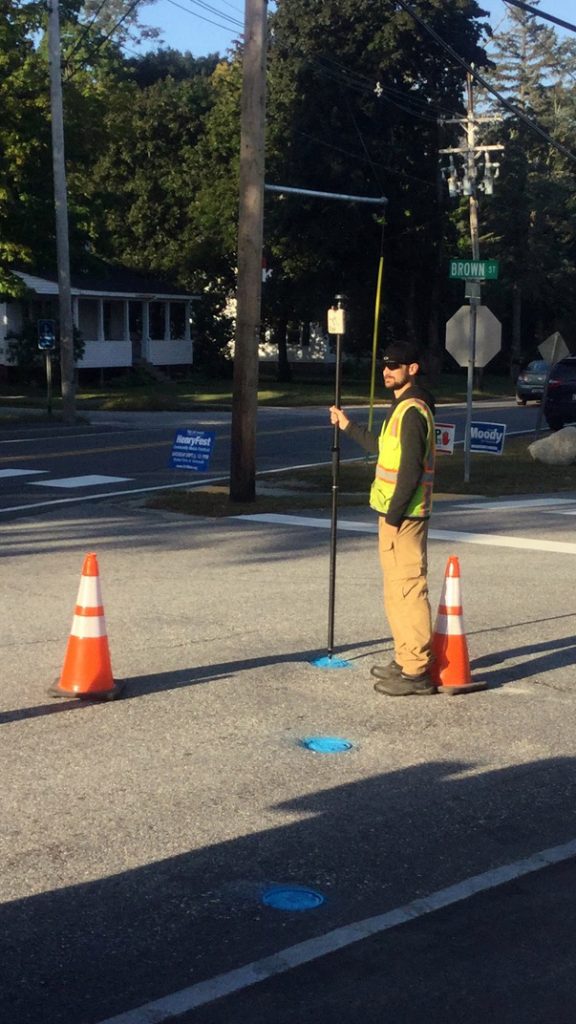
“It’s the affordable price of the Arrow 100 that has made it more possible for my small company to expand, grow, and offer more services.”
— Al Schaeffer, President, Northern Forests, LLC
Selecting ArcGIS Survey123
Schaeffer also knew he wanted to use the ArcGIS Survey123 mobile app from Esri. Survey123 is a form-based, data-collection app which is part of Esri’s web GIS platform, ArcGIS Online. The software works with a “one, two, three” workflow. This includes first configuring a form in the office. Then the form is “pushed out” to field crews, accessed on an iPad, and used for real-time field data collection in both online and disconnected environments. Finally, data from Survey123 can be used in typical workflows associated with infrastructure management, including geospatial analytics and integration with other software.
“Having the ability to take pictures and annotate images, which became part of the attribute table, made Survey123 especially attractive to me,” Schaeffer said.
The other benefit was that the price of a license to ArcGIS Online has come down to just $500.
“That’s dirt cheap,” Schaeffer says. “One person can buy a license of ArcGIS Online and do all kinds of field data collection. It’s one of the best deals out there.”
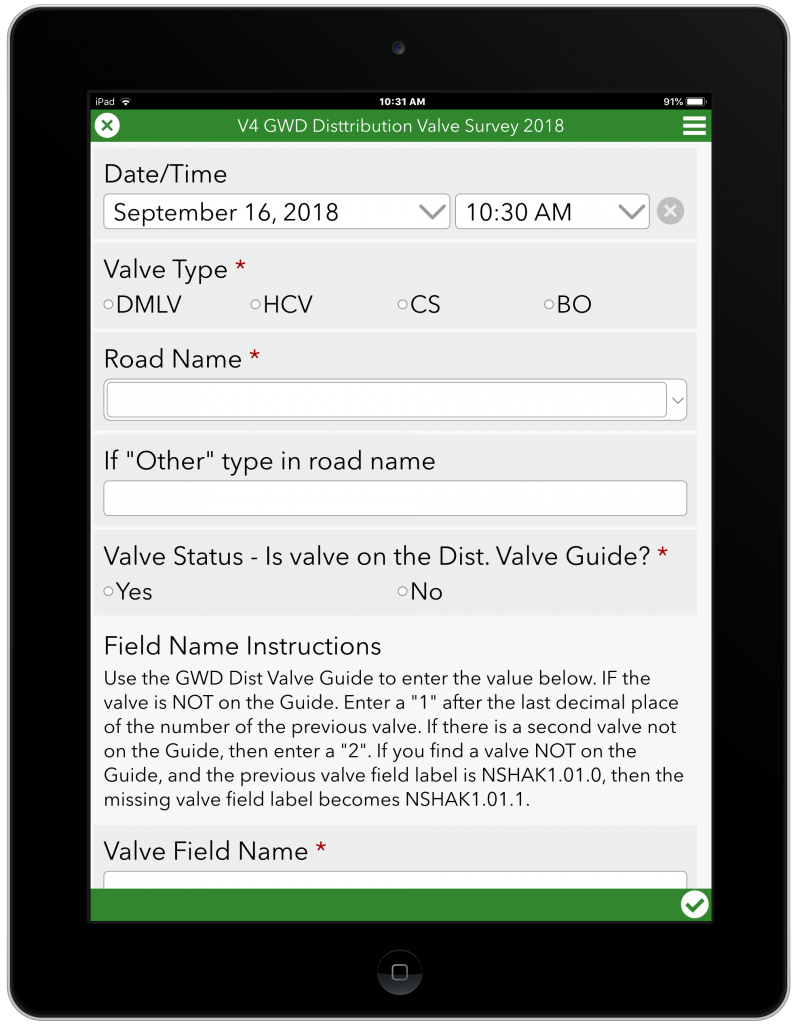
“One person can buy a license of ArcGIS Online and do all kinds of field data collection. It’s one of the best deals out there.”
— Al Schaeffer, President, Northern Forests, LLC
Often, though not always, Schaeffer’s clients also invest in an ArcGIS Online license. This allows Schaeffer to pass on the data he collects directly to a cloud-based geodatabase. The database is secure, and it can be integrated with most modern infrastructure-management software.
“This leaves them with the GIS, where they can sign onto ArcGIS Online and see their entire water system,” Schaeffer says. “They do see the value.”
The Results: Creating a Future-Proof Resource for Maine’s Water Districts
Schaeffer doesn’t just map a water system and then leaves. He believes in training each water district on best GIS practices for maintaining and managing their infrastructure. Schaeffer’s background as a vocational forestry and heavy equipment instructor imbued him with the skills to anticipate his clients’ training needs.
“My experience in education for many years has given me an ability to sense when someone is ‘getting’ an idea or concept, and when they are not,” Schaeffer says. “This experience, I think, helps me communicate some of the complex concepts found in mapping work.”
“The clients I work with like the technology but are sometimes overwhelmed by the complexity of it. Working with them at their own speed helps overcome this anxiety.”
“I work slowly with clients,” Schaeffer says. “We map all the points, typically in the summer, and then we sit down with the district manager in winter and connect the dots of the system. We do a knowledge-transfer.”
So far, Northern Forests has worked with nearly a half dozen clients, including utilities and one local planning office. He hopes to dedicate his resources full-time to GIS mapping projects after retiring from his teaching work.
“My goal is for them to have the understanding of the software and all the valuable information it can provide,” Schaeffer says.
For more information on Northern Forests, please check back in time for a link to their website, as their website is being redone.

